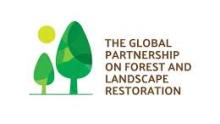Desertification in arid and semiarid areas of Northwest China is a major current environmental issue for the country, caused by the interaction of a naturally dry climate, recurrent periods of prolonged droughts, anthropogenic factors over long periods of time, and specific topographic and geographic conditions. Among the anthropogenic factors are poor land management, inadequate farming techniques and over-cultivation, overgrazing and the removal of natural vegetation; misuse of water resources; and poor environmental and ecosystem management. Estimates suggest that 2.62 million square kilometers (approximately 27.3 percent of China’s total land area) and 400 million people are affected by desertification, and eco- refugees have appeared in some regions due to desertification.
The objective of this project is to strengthen the Chinese Government’s Program to Combat Desertification by supporting activities aimed at controlling desertification and rehabilitating degraded areas in the Ningxia Hui Autonomous Region of Northeast China. Intervention is proposed in strategically important fragile and desert areas where sandstorms threaten the well-being of millions of people, and where environmental degradation puts agriculture, industry, and infrastructure seriously at risk. The project aims to address these threats by developing the most cost-effective and sustainable approaches to desertification control and environmental rehabilitation in key Ningxia locations.
To date, around 36,000 hectares, or more than 60 percent of the total project target area, has been completed through dune stabilization, re-vegetation, and tree planting.
Despite adverse field conditions such as dry weather with very limited precipitation, involved agencies have made determined efforts to address the challenges constraining project implementation by improving planting technologies.
Consequently, the plant survival rate has been significantly increased, and shrub and tree species have been diversified. It is expected that under the project, around 60,000 hectares of sandy areas will be treated with sustainable land and water management, desertification controlled, degraded vegetation rehabilitated, and with more than US$25 billion worth of infrastructure and farmland protected.
Total project costs are US$113.75 million, of which US$80 million will be financed by the World Bank, and US$33.75 million by the government.


